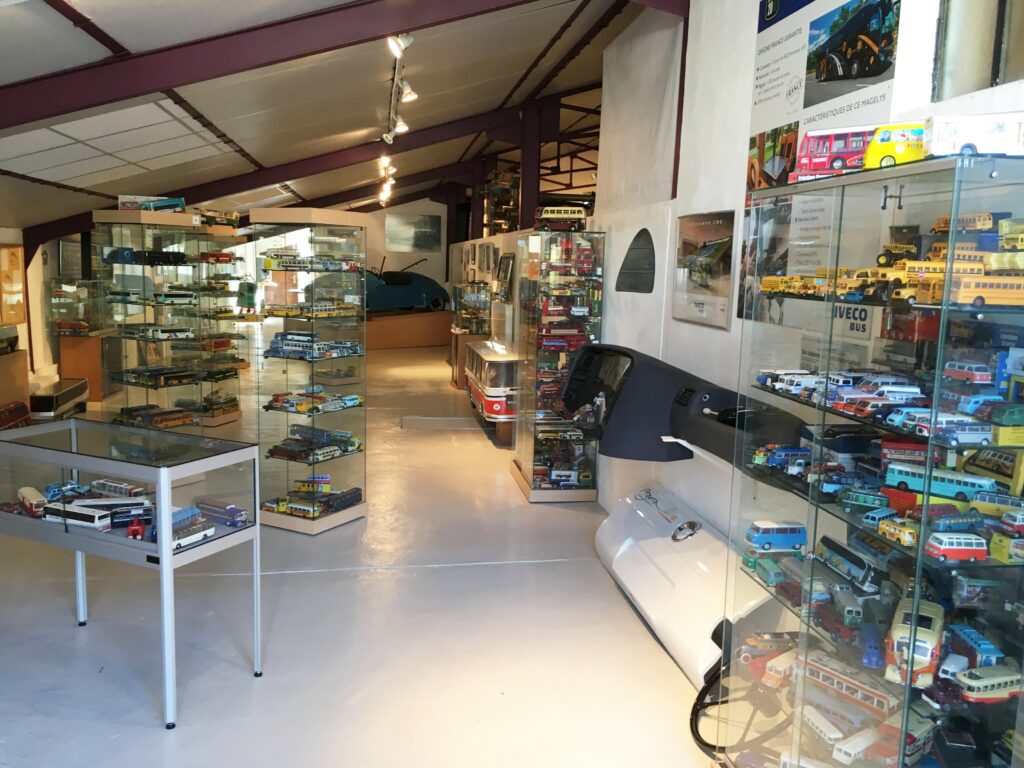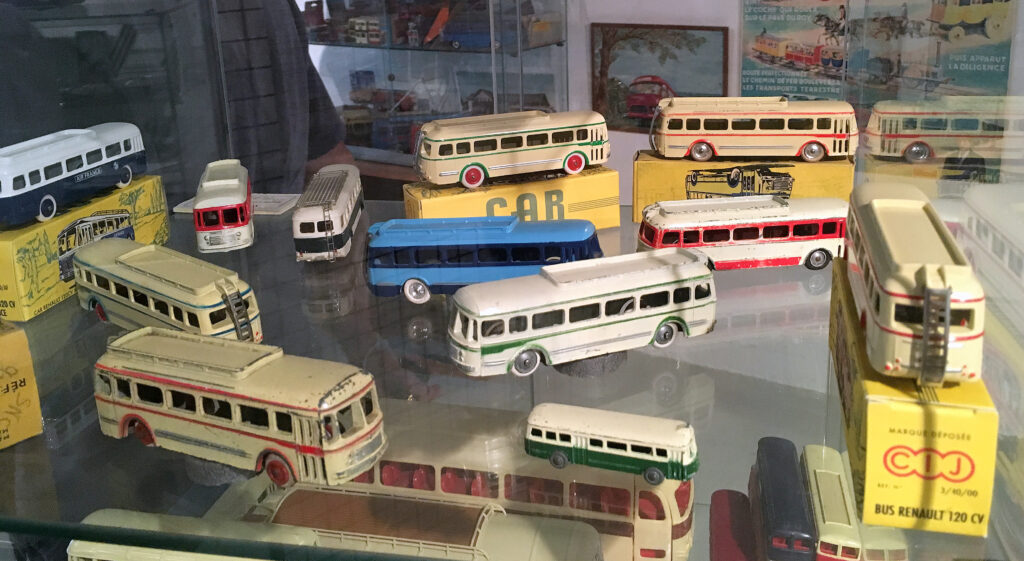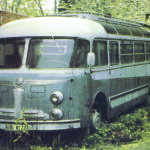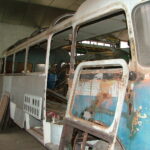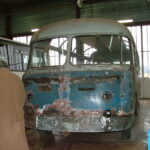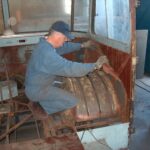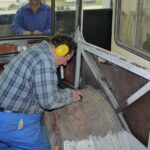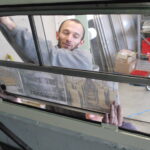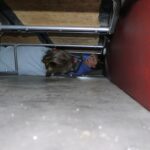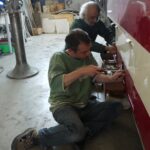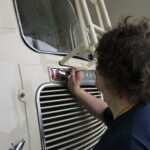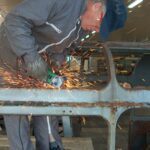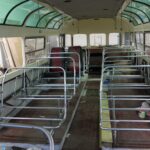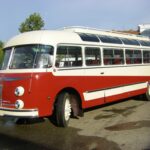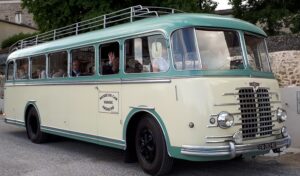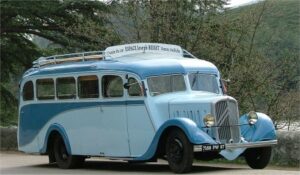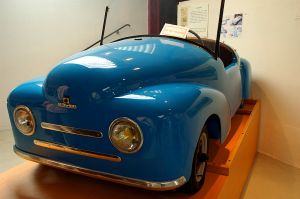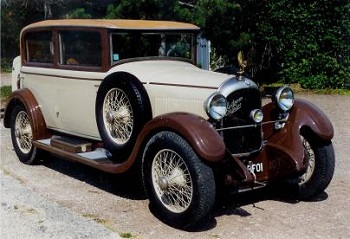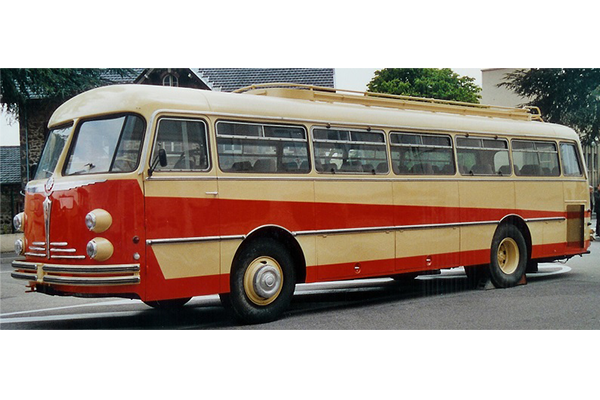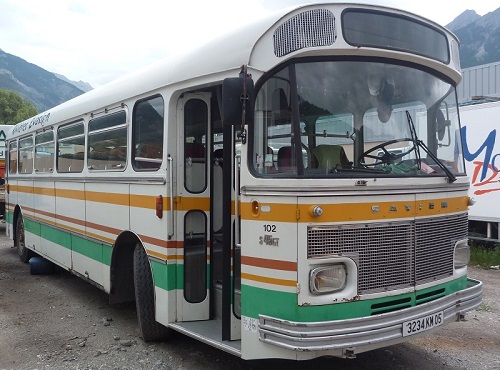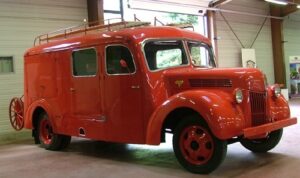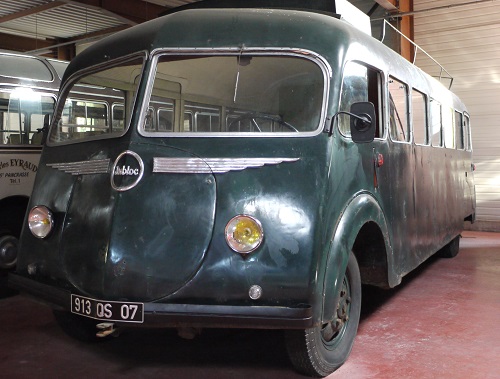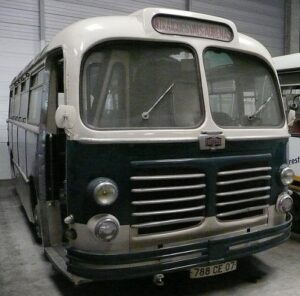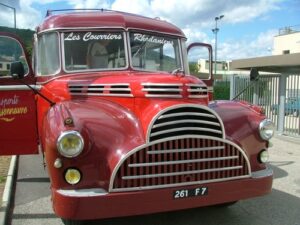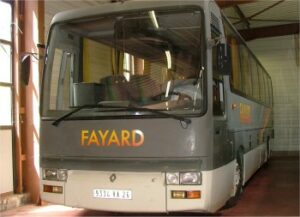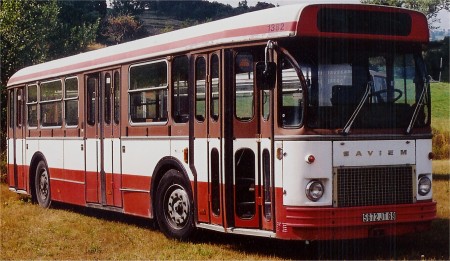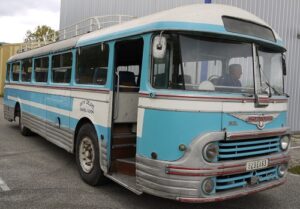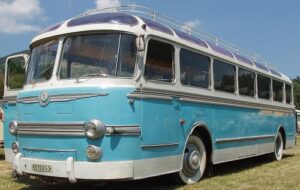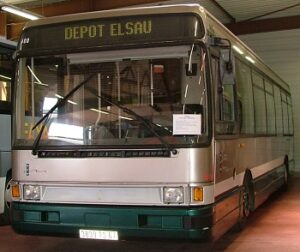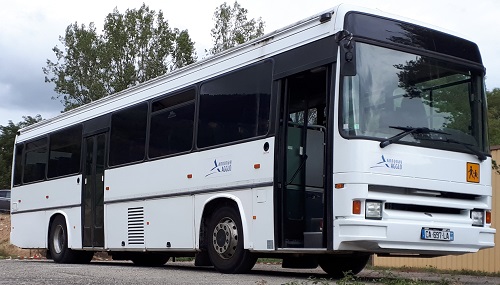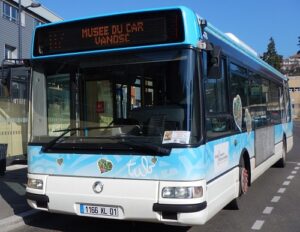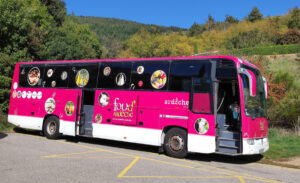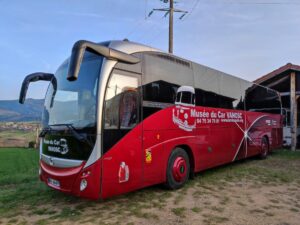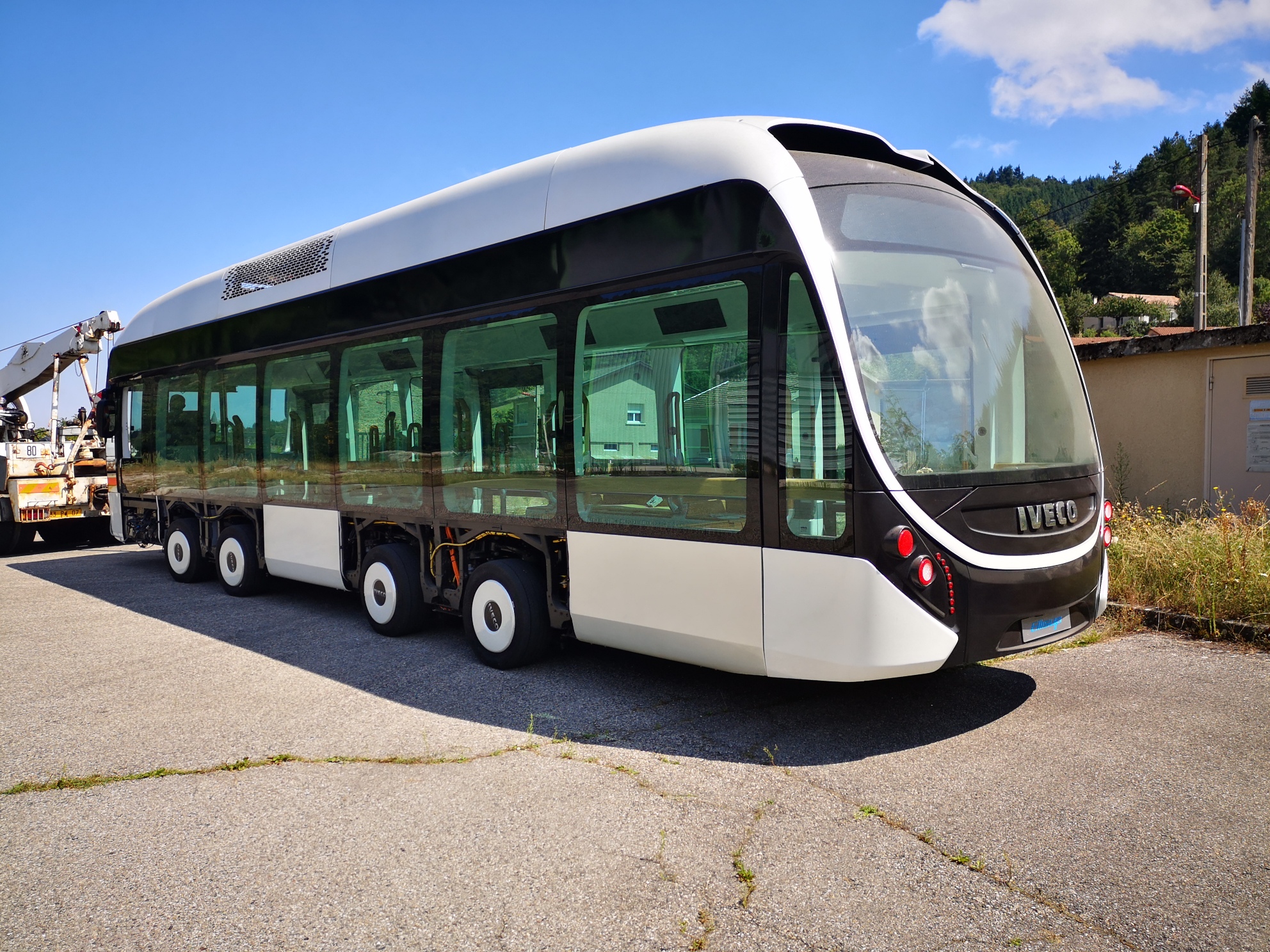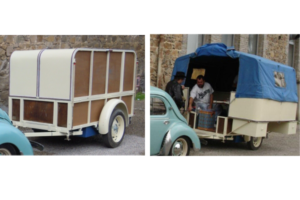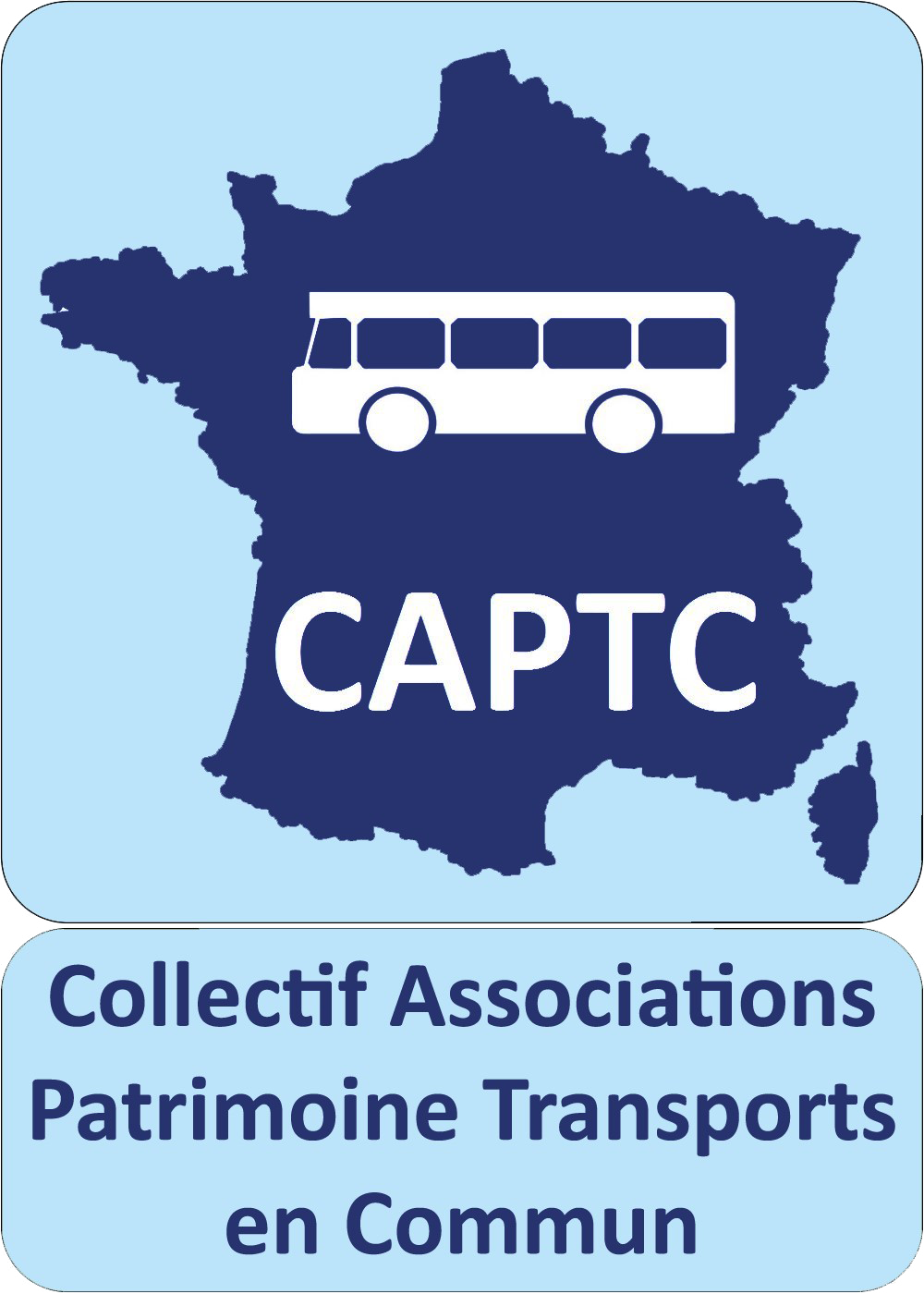Our Collection
Our historic Vehicles
Here is a small presentation of some old vehicles in the museum’s collection
The Museum's flagship vehicle
Autocar Isobloc 648 DP 103 de 1955
Historical
This vehicle was put into circulation in 1955 (Serial number 2377). It initially belonged to Ginestet coaches in Naucelle Gare in Aveyron (previous registration 690 BY 12) and was abandoned in a meadow.
Jean-Claude Espérou writes: “For years, Jean Ginestet, deceased today, who was a stubborn old original, refused to give me his 648 DP 103. With death in my soul, I saw him rotting in front of the entrance from his garage in the harsh climate of Naucelle (Aveyron). More patient and more intriguing than me, Jacques Vaisson made it the siege of it for many years and obtained that it be sold.”
“The Isobloc 648 DP in the photo, saved at the last minute by Jacques Vaisson, is currently the star at La Vanaude which has magnificently restored it, but this vehicle was also the first sale of a new coach for the author of these lines … »
Jacques Vaisson writes: “I actually met Mr. Ginestet so that he could transfer this 648 DP to CHB but without success despite the support of his daughters. The “good man” was special because he also refused to shelter or cover his vehicle because one of the window was broken following the fall of a brick that fell from a shed. The rain had begun its “work”.”
Then the Maisonneuve coaches, now Courriers rhodaniens (26) had recovered it and began to have it dismantled by Mr. Patrick Fournier, coachbuilder in Cornas (07130) in June 1992, at the request of René Maisonneuve.
This restoration having been abandoned, René Maisonneuve gave it to the Coach Museum and the restoration was carried out by volunteers from the association… It was inaugurated on the occasion of the 5th car festival in 2010.
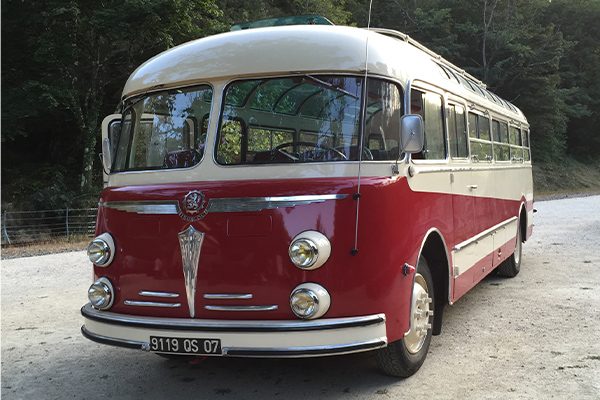
33 seats
Length: 9.34 m / Width: 2.48 m
Empty weight: 5,800 kg
GVW: 11,000 kg
Panhard 4HL Diesel engine, 4 cylinders 6.8 l
110 hp
Autocar Besset-Berliet PCK 8V de 1949
5-cylinder diesel
Displacement 7.9 liters
Bore x Stroke: 120 x 140
Power 110 horsepower at 1800 rpm
5-cylinder diesel
Displacement 7.9 liters
Bore x Stroke: 120 x 140
Power 110 horsepower at 1800 rpm
Autocar P32 Citroën de 1935
26 seats
Length: 7.30 m / Width: 2.40 m
Empty weight: 4,000 kg
GVW: 6,100 kg
Panhard 4HL diesel, 4 cylinders 6.8 l
110 hp
Autocar Saviem S45 de 1977
Autocar ILIADE “Foud’Ardèche”
Put into circulation: May 2, 2003
16 seats + 1 driver’s seat
Axle weight 1: 4360 kg
Axle weight 2: 8620 kg
Total weight 12580 kg
Brand: IRISBUS
Gender: TCP
Type: SFR115 version 6X
Identification number: VNESFR11500210699
Arrangement of rear video area behind the stairwell.
Installation of a video projection screen and speakers behind the driver and guide boxes.
Electrical outlets usable only when stationary.
This vehicle was purchased second-hand by the “Goutez l’Ardèche” association which transformed it into an educational vehicle to provide workshops on local Ardèche products.
Sold to La Vanaude in 2022.
Autocar MAGELYS
Put into circulation: January 12, 2011
Number of seats: 54 seats + 1
Empty weight 14,101 kg
GVW 22,600kg
Previous owner IVECO France. [Made available to the CSA of Annonay (rugby club)] then acquired by Vanaude on December 30, 2021.
Power (standard): 331 Kw
Administrative power: 28 HP
Displacement: 10,308 cm3
Autobus Prototype ELLISUP
The Iveco Ellisup is a prototype electric urban bus presented in October 2013 at the Busworld Kortrijk exhibition by Iveco Bus, the bus division of the Iveco group.
No production model was manufactured.
IVECO Bus sold this prototype to La Vanaude in 2021.
This vehicle was selected in 2009 by the Ademe demonstrator fund. The Electric Bus project with LIthium batteries and SUPercapacities (ElLiSup) is led by Iveco Bus in collaboration with various French partners including Michelin, EDF, RATP and the CEA.
The objective of the project was to develop an electric bus with rapid end-of-line charging. According to Iveco Bus, the operating and ownership costs (TCO) were estimated between that of a conventional diesel bus and that of a trolleybus.
This vehicle remained at the prototype stage. It appears that the Ellisup was equipped with electric motors developed with Michelin, housed in 4 of the bus’s 8 small diameter wheels. This configuration made it possible to limit the volume occupied by the engines and to benefit from a more spacious and more user-friendly interior space.
The electric motors were powered by a combination of batteries and supercapacitors. The Ellisup was capable of recharging at line terminals with a pantograph system placed at the front of the bus, with a 4-minute charging system for 8 to 10 km of range. This process made it possible to reduce the mass of batteries on board the vehicle and contributed to reducing operating costs.
The Ellisup included in its interior layout a WiFi connection, an automatic pedestrian detection system, panoramic view windows, variable intensity lighting, etc.
La Tubobloc de 1951
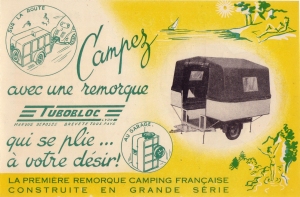
Our miniature vehicles
Here is a picture of our room of miniatures to amaze young and old
